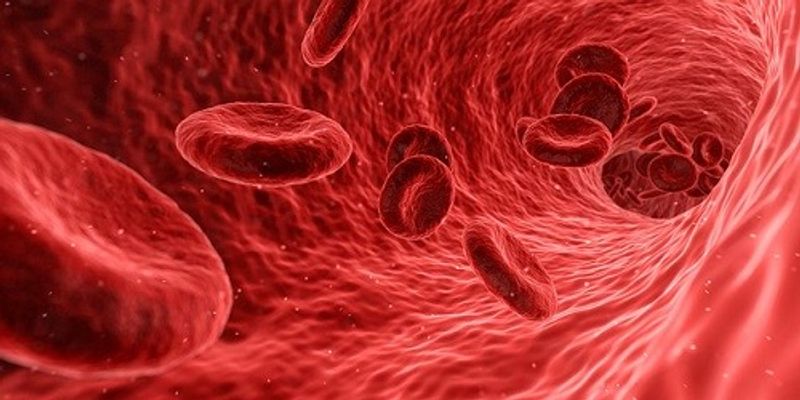Liquid Biopsy
A liquid biopsy is a diagnostic test using liquid biological samples. Considered non-invasive, it can be used to track cancers, heart issues, and do prenatal diagnosis.
-
MAY 14, 2020 | 2:15 PMIn the past years, next-generation sequencing has revolutionized the way testing is done in the field of clinical oncology research. Parallel testing of genomic markers in tissue biopsies as...MAY 14, 2020 | 2:15 PMIn the past years, next-generation sequencing has revolutionized the way testing is done in the field of clinical oncology research. Parallel testing of genomic markers in tissue biopsies as...APR 21, 2020 | 6:00 AMThe versatility of standard PCR and qPCR is well known. Digital PCR is now taking this to a whole new level. The power of partitioning enables you to explore new frontiers which have been li...Speaker: Daniel Löfgren, MSc.APR 15, 2020 | 9:00 AMDATE: April 15, 2020 TIME: 9:00am PT, 12:00pm ET We report a molecular assay, Methyl-HiC, that can simultaneously capture the chromosome conformation and DNA methylome in a cell. Methyl-HiC...MAR 31, 2020 | 9:00 AMDATE: March 31, 2020 TIME: 9:00am PT, 12:00pm ET HER2-positive breast cancer is a type of breast cancer caused by over-expression of a protein called human epidermal growth factor receptor 2...Speaker: Matteo Allegretti, PhDOCT 10, 2019 | 1:30 PMMetastatic castration resistant prostate cancer (mCRPC) refractory to secondary hormonal treatments such as enzalutamide or abiraterone acetate are the most lethal of prostate cancers. In thi...Speaker: Tian Zhang, MD, MHSOCT 10, 2019 | 12:00 PMTumor mutational burden (TMB) is an emerging biomarker that correlates with response to immunotherapeutic agents, such as checkpoint inhibitors. Recent studies indicate that a high mutation l...Speaker: Ravindra Kolhe, MD, PhDOCT 10, 2019 | 10:30 AMOsteosarcoma (OS) is the most common bone tumor in pediatric and adolescent/young adult patients. Over the past three decades, significant improvements in the survival rates or therapeutic ap...Speaker: Troy McEachron, PhDPresented at: Cancer Research & Oncology Week Virtual Event Series 2019
Sponsored By: NanoString TechnologiesOCT 10, 2019 | 10:30 AMAccumulation of structural variations (SVs) across the genome is a known trigger factor for oncogenesis. Structural mutations have been clearly implicated in a number of cancers, most notably...Speaker: Sven Bocklandt, PhDOCT 10, 2019 | 9:00 AMCopy-number alterations and chromosomal translocations are widespread in cancer and frequently causing oncogenic mutations that drive tumorigenesis and therapy resistance. Despite their preva...Speaker: Cheng-Zhong Zhang, PhDOCT 10, 2019 | 9:00 AMBlockade of CTLA-4 and PD-1, members of the B7/CD28 family, have proven to be the most successful cancer immunotherapies to date. While the current therapeutic focus remains on B7/CD28 family...Speaker: Anthony Persen, PhDPresented at: Cancer Research & Oncology Week Virtual Event Series 2019
Sponsored By: ACD - A Bio-Techne BrandOCT 09, 2019 | 12:00 PMThe introduction of robot-assisted surgical technology into urological practice, has introduced new horizons for reducing the morbidity and enhancing the efficacy of surgery. Open radical cys...Speaker: Khurshid Guru, MDOCT 09, 2019 | 10:30 AMA subset of women with ovarian cancer will present with an apparently isolated adnexal mass. Many of these women will have early stage ovarian cancer with a relatively good prognosis. Unfortu...Speaker: Mitchel Hoffman, MDMAY 30, 2019 | 6:00 AMOncologists have many options when tasked with treating a patient’s cancer. Unfortunately, many cancer drugs and therapies come with potentially debilitating side effects. As such, it i...APR 10, 2019 | 1:30 PMThe exponential advents of advances in techniques and types of molecular diagnostic testing, and modifying strategies for these tests, are encouraging; but these evolutions simultaneously con...APR 10, 2019 | 1:30 PMMyeloid leukemias encompass a group of different diseases that include myeloproliferative neoplasms (MPN), myelodysplastic syndrome (MDS) or acute myeloid leukemia (AML). These diseases are d...Speaker: Véronique Laloux, PhD , Beate Litzenburger, Ph.D.APR 10, 2019 | 1:30 PMIntegration of technology is influencing practice in the clinical laboratory and treatment of patients in the clinical practice arena. As laboratories begin to move from a volume to value mod...Speaker: Elizabeth Marlowe, PhD, D(ABMM) , Joanna Sickler, MPH, MBAPresented at: Molecular Diagnostics Virtual Event Series 2019
APR 10, 2019 | 12:00 PMThe prevailing philosophy in biological testing has been to focus on simple tests with easy to interpret information such as ELISA or lateral flow assays. At the same time, there has been a d...APR 10, 2019 | 12:00 PMPersonalized medicine driven by genomic-based treatments continues to increase in importance. Representatives from two distinct healthcare entities – a regional reference lab and commun...Speaker: Tony Magliocco, MD , Keith Gligorich, PhDAPR 10, 2019 | 12:00 PMDetermining which patients would derive clinical benefit from immunotherapy is a compelling clinical question. Biomarkers have been shown to predict therapy outcome in various types of cancer...APR 10, 2019 | 10:30 AMQIAGEN helps your team focus on the opportunities, not the obstacles, with an end-to-end clinical testing solution. During this talk, we will present our clinical decision support solutions,...Speaker: Sheryl Elkin, PhD , Dan Richards, PhDAPR 10, 2019 | 10:30 AMThe BRCA1 and BRCA2 genes represent the best examples of the modern understanding of cancer molecular genetics. Testing for germline and somatic mutations in BRCA 1/2 has gradually become com...Speaker: Anika Joecker, PhD , Jennifer Poitras, PhDAPR 10, 2019 | 10:30 AMCRISPR-chip combines two powerful technologies ,CRISPR and Graphene, for rapid detection of nucleic acids. This talk will focus on design and fabrication of CRISPR-chip and its potential util...APR 10, 2019 | 9:00 AMRegulatory requirements for verification and validation are complex and often cause confusion among clinical laboratorians, especially in regards to quantitative molecular assays. This presen...Speaker: Morgan Pence, PhD, D(ABMM)
MAY 14, 2020 | 2:15 PM
In the past years, next-generation sequencing has revolutionized the way testing is done in the field of clinical oncology research. Parallel testing of genomic markers in tissue biopsies as...
MAY 14, 2020 | 2:15 PM
In the past years, next-generation sequencing has revolutionized the way testing is done in the field of clinical oncology research. Parallel testing of genomic markers in tissue biopsies as...
APR 21, 2020 | 6:00 AM
The versatility of standard PCR and qPCR is well known. Digital PCR is now taking this to a whole new level. The power of partitioning enables you to explore new frontiers which have been li...
Speaker:
Daniel Löfgren, MSc.
APR 15, 2020 | 9:00 AM
DATE: April 15, 2020 TIME: 9:00am PT, 12:00pm ET We report a molecular assay, Methyl-HiC, that can simultaneously capture the chromosome conformation and DNA methylome in a cell. Methyl-HiC...
MAR 31, 2020 | 9:00 AM
DATE: March 31, 2020 TIME: 9:00am PT, 12:00pm ET HER2-positive breast cancer is a type of breast cancer caused by over-expression of a protein called human epidermal growth factor receptor 2...
Speaker:
Matteo Allegretti, PhD
OCT 10, 2019 | 1:30 PM
Metastatic castration resistant prostate cancer (mCRPC) refractory to secondary hormonal treatments such as enzalutamide or abiraterone acetate are the most lethal of prostate cancers. In thi...
Speaker:
Tian Zhang, MD, MHS
OCT 10, 2019 | 12:00 PM
Tumor mutational burden (TMB) is an emerging biomarker that correlates with response to immunotherapeutic agents, such as checkpoint inhibitors. Recent studies indicate that a high mutation l...
Speaker:
Ravindra Kolhe, MD, PhD
OCT 10, 2019 | 10:30 AM
Osteosarcoma (OS) is the most common bone tumor in pediatric and adolescent/young adult patients. Over the past three decades, significant improvements in the survival rates or therapeutic ap...
Speaker:
Troy McEachron, PhD
Presented at: Cancer Research & Oncology Week Virtual Event Series 2019
Sponsored By: NanoString Technologies
Sponsored By: NanoString Technologies
OCT 10, 2019 | 10:30 AM
Accumulation of structural variations (SVs) across the genome is a known trigger factor for oncogenesis. Structural mutations have been clearly implicated in a number of cancers, most notably...
Speaker:
Sven Bocklandt, PhD
OCT 10, 2019 | 9:00 AM
Copy-number alterations and chromosomal translocations are widespread in cancer and frequently causing oncogenic mutations that drive tumorigenesis and therapy resistance. Despite their preva...
Speaker:
Cheng-Zhong Zhang, PhD
OCT 10, 2019 | 9:00 AM
Blockade of CTLA-4 and PD-1, members of the B7/CD28 family, have proven to be the most successful cancer immunotherapies to date. While the current therapeutic focus remains on B7/CD28 family...
Speaker:
Anthony Persen, PhD
Presented at: Cancer Research & Oncology Week Virtual Event Series 2019
Sponsored By: ACD - A Bio-Techne Brand
Sponsored By: ACD - A Bio-Techne Brand
OCT 09, 2019 | 12:00 PM
The introduction of robot-assisted surgical technology into urological practice, has introduced new horizons for reducing the morbidity and enhancing the efficacy of surgery. Open radical cys...
Speaker:
Khurshid Guru, MD
OCT 09, 2019 | 10:30 AM
A subset of women with ovarian cancer will present with an apparently isolated adnexal mass. Many of these women will have early stage ovarian cancer with a relatively good prognosis. Unfortu...
Speaker:
Mitchel Hoffman, MD
MAY 30, 2019 | 6:00 AM
Oncologists have many options when tasked with treating a patient’s cancer. Unfortunately, many cancer drugs and therapies come with potentially debilitating side effects. As such, it i...
APR 10, 2019 | 1:30 PM
The exponential advents of advances in techniques and types of molecular diagnostic testing, and modifying strategies for these tests, are encouraging; but these evolutions simultaneously con...
APR 10, 2019 | 1:30 PM
Myeloid leukemias encompass a group of different diseases that include myeloproliferative neoplasms (MPN), myelodysplastic syndrome (MDS) or acute myeloid leukemia (AML). These diseases are d...
Speaker:
Véronique Laloux, PhD
, Beate Litzenburger, Ph.D.
APR 10, 2019 | 1:30 PM
Integration of technology is influencing practice in the clinical laboratory and treatment of patients in the clinical practice arena. As laboratories begin to move from a volume to value mod...
Speaker:
Elizabeth Marlowe, PhD, D(ABMM)
, Joanna Sickler, MPH, MBA
Presented at: Molecular Diagnostics Virtual Event Series 2019
APR 10, 2019 | 12:00 PM
The prevailing philosophy in biological testing has been to focus on simple tests with easy to interpret information such as ELISA or lateral flow assays. At the same time, there has been a d...
APR 10, 2019 | 12:00 PM
Personalized medicine driven by genomic-based treatments continues to increase in importance. Representatives from two distinct healthcare entities – a regional reference lab and commun...
Speaker:
Tony Magliocco, MD
, Keith Gligorich, PhD
APR 10, 2019 | 12:00 PM
Determining which patients would derive clinical benefit from immunotherapy is a compelling clinical question. Biomarkers have been shown to predict therapy outcome in various types of cancer...
APR 10, 2019 | 10:30 AM
QIAGEN helps your team focus on the opportunities, not the obstacles, with an end-to-end clinical testing solution. During this talk, we will present our clinical decision support solutions,...
Speaker:
Sheryl Elkin, PhD
, Dan Richards, PhD
APR 10, 2019 | 10:30 AM
The BRCA1 and BRCA2 genes represent the best examples of the modern understanding of cancer molecular genetics. Testing for germline and somatic mutations in BRCA 1/2 has gradually become com...
Speaker:
Anika Joecker, PhD
, Jennifer Poitras, PhD
APR 10, 2019 | 10:30 AM
CRISPR-chip combines two powerful technologies ,CRISPR and Graphene, for rapid detection of nucleic acids. This talk will focus on design and fabrication of CRISPR-chip and its potential util...
APR 10, 2019 | 9:00 AM
Regulatory requirements for verification and validation are complex and often cause confusion among clinical laboratorians, especially in regards to quantitative molecular assays. This presen...
Speaker:
Morgan Pence, PhD, D(ABMM)























